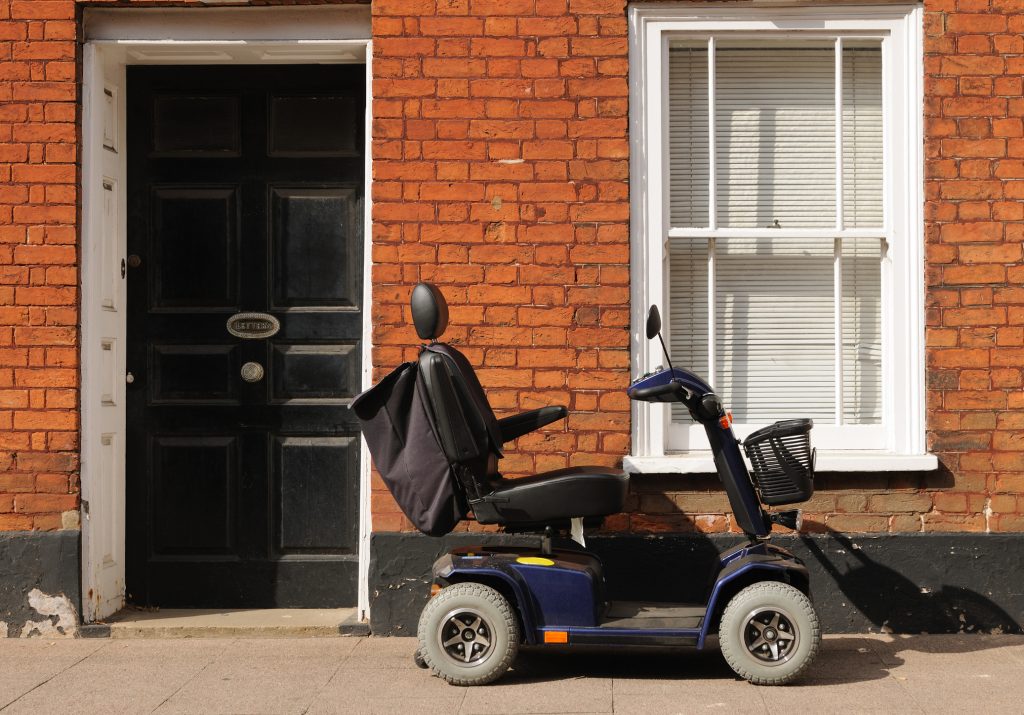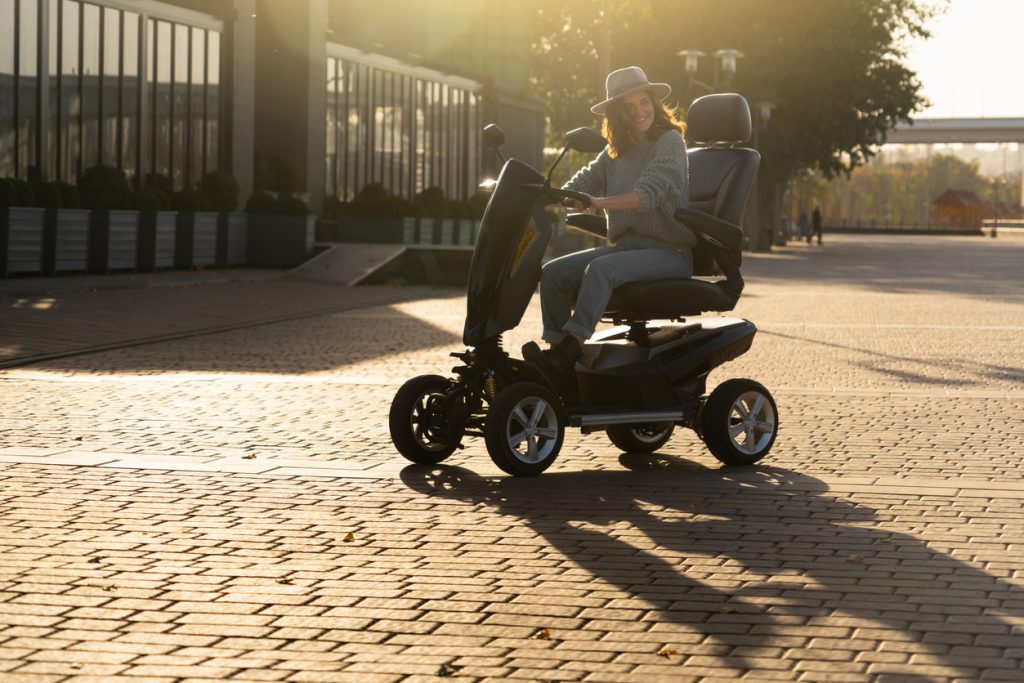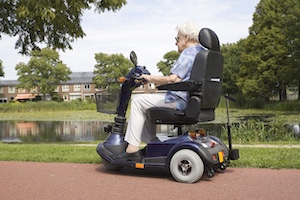If you’ve just purchased a new mobility scooter, one of your first concerns should be learning how to maintain your mobility scooter to ensure it lasts as long as possible. In this guide, we’ll cover some of the key points you need to know about maintaining your mobility scooter year-round.
Mobility scooters are often a big investment, so keeping your scooter in top condition should be a priority – and thankfully, there are many small but effective things you can do to extend your scooter’s lifetime.
Key Takeaways
- You can extend the lifetime of the battery by following good charging practices
- Tyre pressure should be checked regularly, just as you would with a car or bike
- Storing your mobility scooter indoors and locking it is the best way to protect it long term from both theft and damage
8 Top Tips for Maintaining Your Mobility Scooter:
1. Maintain Your Battery
The majority of mobility scooters have two 12V batteries that can be recharged. Typically, the battery on your mobility scooter should last for up to 2 or 3 years, but you do need to maintain it in order to extend its lifetime.
A few key points to look after your scooter’s battery include:
- Always charge overnight to keep the battery topped up (between 8 – 10 hours)
- Charge your scooter after use if it has less than 80% charge
- If you do not use your scooter frequently, be sure to charge it once a month (perhaps twice in cold weather) to prevent the battery from going flat
- Keep the battery out of the cold whenever possible, as cold temperatures will reduce the amount of charge it can hold
Battery requirements may vary depending on your individual scooter, so it is always best to double-check your manual to ensure you are maintaining your battery according to its requirements!
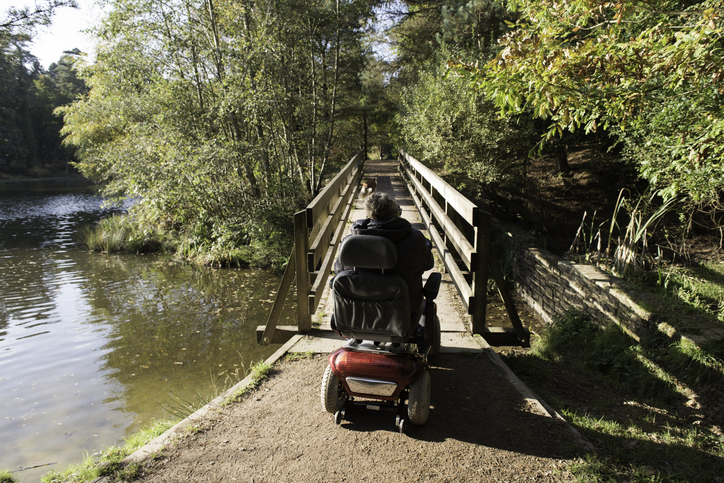
2. Store It In A Clean, Dry, And Safe Space
When not in use, your scooter should ideally be stored in a clean, dry space with a mains socket close by so you can charge it when you need to. If you don’t have space inside your home, a shed or garage can make the ideal secure space to store your scooter. Taking care to lock it, especially if you are keeping it in a communal area, will provide peace of mind.
Try to avoid storing your scooter outdoors and allowing it to sit outside if it is raining, as this can cause your scooter to corrode over time. If you have to store it outside, be sure to invest in a waterproof cover to protect your scooter.
3. Clean Your Scooter After Use
To keep your scooter in top condition, it is a good idea to clean it with a soft, damp cloth after use. This will ensure your scooter stays free of dust and debris which could mark your scooter and cause corrosion.
When cleaning your scooter, be sure to pay attention to the area around the battery terminals, and the underside of your scooter – and remember that heavy-duty cleaning every once in a while can do wonders for your scooter!
A weekly clean with a damp cloth and a mild detergent works well and also helps you identify any superficial damage that may have happened that week. Harsh chemicals and abrasive pads should be avoided as they will damage the finish on your mobility scooter.
Wiping down any electrical components after using your scooter in wet conditions will prevent moisture from damaging them. Likewise, regularly cleaning the wheels will prevent corrosion and ensure smooth rolling.
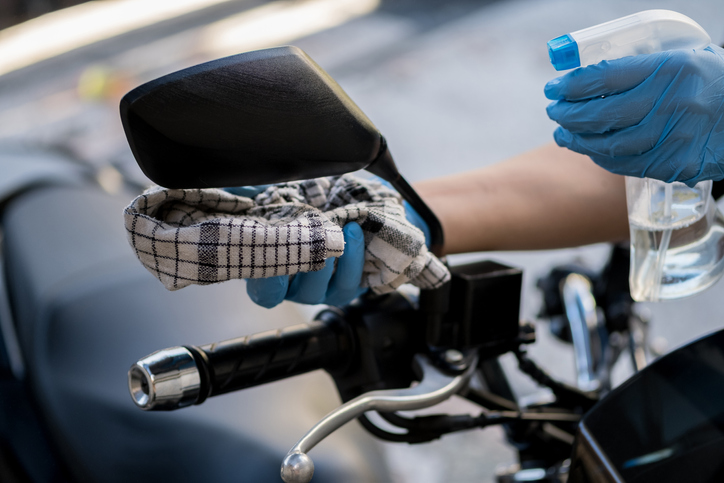
4. Check Your Tyres
Some mobility scooters have pneumatic tyres, in which case their air pressure will need checking regularly, just as you would with a car or bicycle.
Maintaining the tyre pressure in your tyres will ensure you have a far less bumpy ride on your scooter, and will also help your tyres last longer before they need replacing. Tyres that are too soft will wear unevenly on the outer edges of the tread, whereas an overinflated tyre will wear too fast in the middle of the tread. Here are some key points to note:
- The recommended tyre pressure is normally printed on the tyre wall
- Purchasing an electric tyre pump can make this job much easier
- After you have pumped the tyres, check for uneven wear, cuts, cracks in the walls, and potential causes of punctures
Even at low speeds, worn or damaged tyres will cause your mobility scooter to skid. This is particularly the case in wet or icy conditions, where there will be less grip on the roads. You may find that our guide to using your mobility scooter in winter helps at this point.
5. Get Your Mobility Scooter Professionally Serviced
Having a professional inspect your scooter for any faults once a year is an essential step in maintaining your scooter, as there are some issues that you may not know to look out for.
Take your scooter to your local repair shop for an annual service to have your brakes and tyres thoroughly checked, wiring inspected, and more. This not only ensures your scooter is in top condition for as long as possible but will also keep you safe from your scooter failing when you are driving it.
Take your scooter to your local repair shop for an annual service to have your brakes and tyres thoroughly checked, wiring inspected, and more. This not only ensures your scooter is in top condition for as long as possible, but it will also keep you safe from your scooter failing when you are riding it.
A professional service will include an in-depth series of battery diagnostic tests to check how much charge the battery can hold and how long it can hold the charge. As batteries age, they hold less and less charge and go flat much quicker. The service will also check for the following:
- Signs of a worn gearbox that may reduce efficiency and speech
- Worn brakes increase your stopping distance and compromise safety
- Any other worn, damaged, or corroded parts that need to be replaced
You can also take steps to reduce the cost of your annual service with the next step in this guide.
6. Practice Routine Maintenance At Home
You don’t have to be mechanically minded to significantly improve the condition and extend the lifetime of your mobility scooter. Here are some simple things you can do at home in just a couple of minutes:
- Notice the suspension and get it serviced if it starts to feel too hard or too soft and spongy
- Make sure you feel comfortable with how responsive the brakes are, if they grind or screech, they need to be serviced
- Check for loose screws, nuts and other fixtures that may rattle when you ride over small bumps or on uneven surfaces
Simple little checks like these will help you identify problems early so that they cost a fraction of the price to fix and repair.
7. Embrace Seasonal Maintenance
Adapting your maintenance checks when the leaves start falling will help when it comes to staying safe on your mobility scooter in autumn. The same is true of making additional changes when the winter cold snap begins.
A good guide is to focus more on the following key checks when the weather gets colder and wetter:
- Keep electrical components and connections free from moisture
- Ask a professional to regularly lubricate moving parts, such as wheels, so that they move smoothly in cold conditions
- Check the tyre condition before venturing out in the cold air — even if there is no ice, a slippery frost could be on the pavement
Small adjustments like this can make a big difference to your level of comfort and safety during more challenging times of the year.
8. Focus On Safer Maintenance
Making sure that your mobility scooter is safely disconnected from the mains before cleaning it or doing some maintenance is essential. If you are comfortable with doing the maintenance yourself, working in a clear, well-ventilated area is essential.
Because many people who use mobility scooters will use someone else for the maintenance side of things, contacting them in advance and asking where they will work will help. Home-based maintenance can be highly convenient, but it requires a safe and clean space in which to work.
Cover yourself and your mobility scooter against breakdown, theft, accidental damage and more with a Mobility Scooter Insurance policy from Surewise.com. Our policies have no hidden fees or excess, and start from as little as £3.80 per month.


